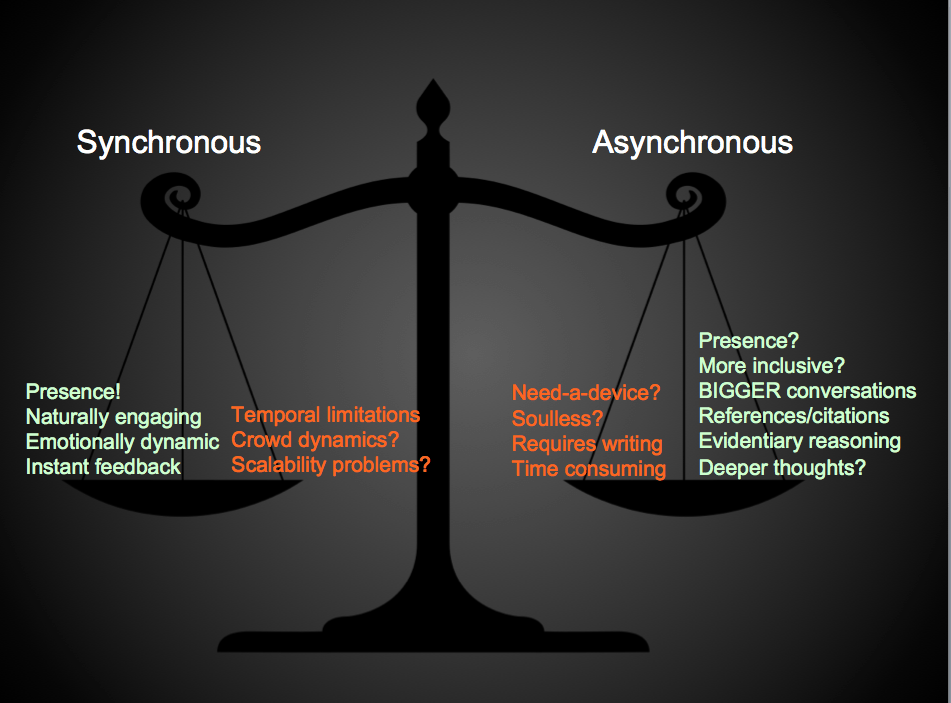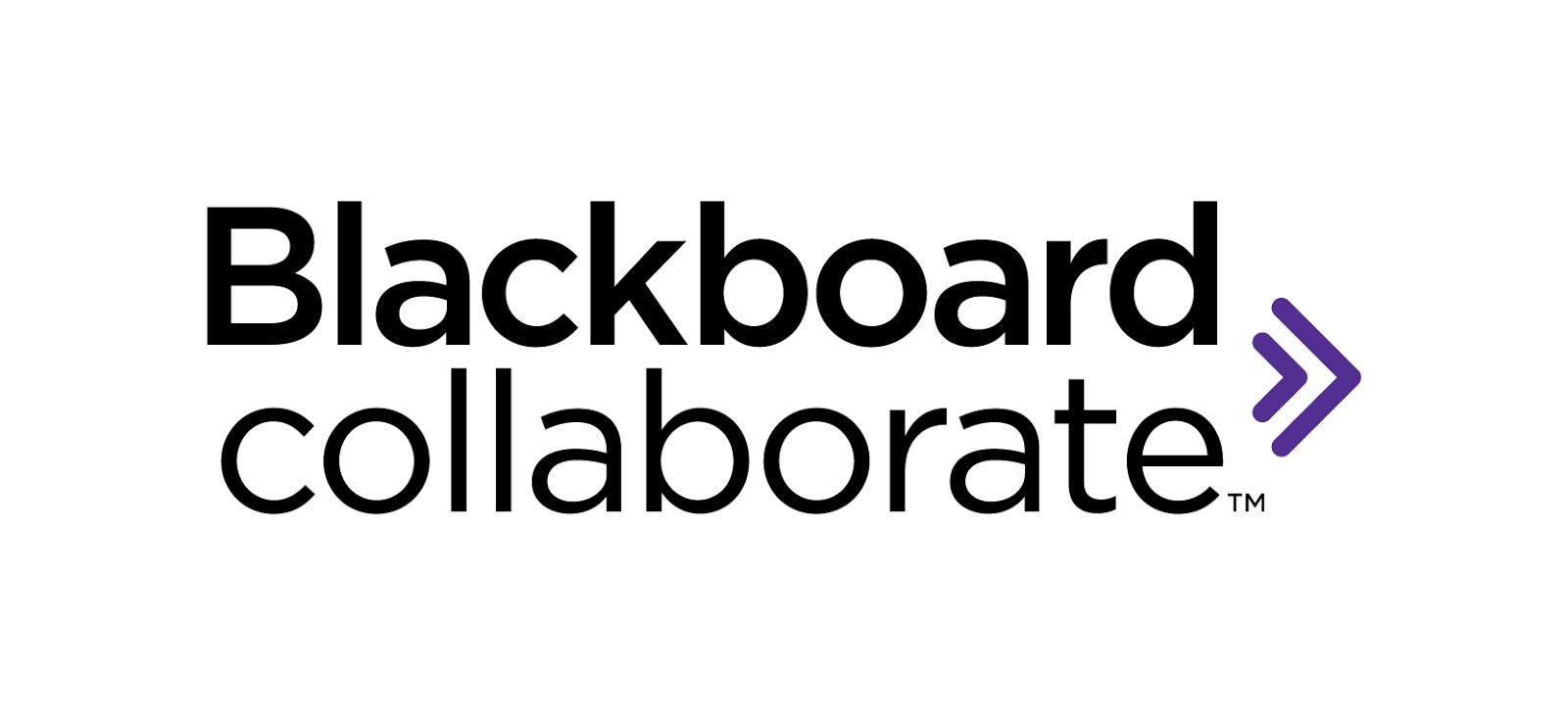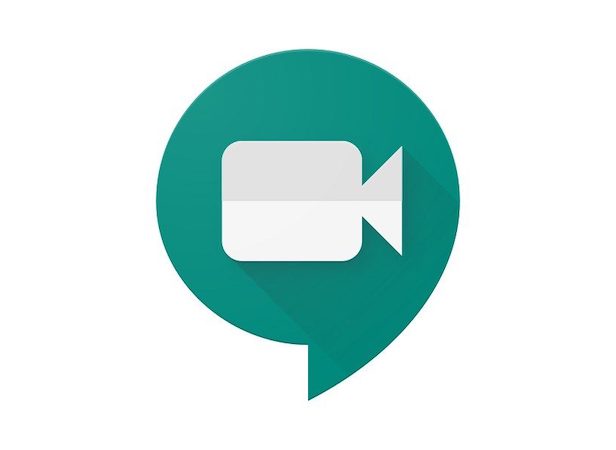Synchronous Communication
Engaging communication dynamic with a high cost
What is It?
Synchronous communication takes place at the same time from different locations. Synchronous interaction can be as simple as talking on the phone or in an audio conference, chatting via instant messaging program such as Slack, or with voice and video using Zoom.

How Can I Use Synchronous Communication in My Course?
We are all accustomed to synchronous modes of communication and interactions from our face to face educational experiences. Many of these same interactions can be facilitated online with modern tools. We can lecture, facilitate classroom discussions, have students conduct group discussions or give presentations in Zoom or a host of other tools. The question we need to ask is which mode of communication should we employ to support our goals. The advantages of synchronous communications are so obvious that we often take them for granted. The human connections within our community, and our own presence as an instructor in the course are easier to establish and maintain. We can provide instant feedback to our students and for many the interaction is inherently more engaging. Non-verbal communication and subtleties in verbal communication are often better expressed with visual or at least complete audio information. However, for all its strengths, synchronous communication has significant downsides as well. Synchronous meetings require simultaneous attendance which is a serious barrier for many of our students. Further, it can be a challenge for everyone to take advantage of the opportunities. Some students tend to dominate conversations and others are more timid. Additionally, conversations are inherently limited to whatever can be expressed or constructed within that narrow synchronous gathering. The following illustration identifies some of the strengths and weaknesses of synchronous and asynchronous communications.

Questions and Considerations
Can you have the kind of course community you want without synchronous course events? Is synchronous communication something that your course requires? Can your community afford the high cost requirements that synchronous events demand? There are no set answers to these questions. The answers, in part, depend on your own style as well as your students’ capacity. Great learning experiences can be and frequently are built without synchronous elements. Likewise synchronous elements can effectively support your intended outcomes. When determining if you should use synchronous elements, ask yourself the following questions:
- Can I present the necessary content to my students asynchronously (recorded short-lectures, screen casts, readings, videos)?
- Can my students demonstrate their understanding asynchronously (discussions, debates, recorded presentations, exams, papers, performances)?
- Can my students and I substantively interact asynchronously?
Technologies:

Blackboard Collaborate Ultra
Collaborate provides synchronous audio, video, and social networking components and is available for use with all University of Alaska classes through their default Blackboard shell. Instructors can set up Collaborate sessions for:
- Hosting guest speakers
- Holding virtual office hours
- Leading test review sessions
- Teaching class sessions online
How can students use Collaborate in a course?
- Student presentations
- Collaborate with other students or instructors
- Meet with instructors during office hours
- Work in study groups
- Complete peer review activities
- Collaborate on group projects
Getting Started with Collaborate Ultra
Quickstart Guide: Get started using Collaborate with Moderator’s Guide.
Quickstart Guide: Get started using Collaborate with the Participant’s Guide.

Google Meet
Google Meet is an app within Google’s GSuite for Education for synchronous video and audio communication. Hangouts Meet allows you to video chat with up to 100 people at a time. It can be used across devices, computers (PC/Mac), tablets, iPads, and smartphones. Instructors can use Google Hangouts Meet to:
- Connect with students or other professionals
- Share a lecture or guest speaker presentation
- Host virtual office hours
- Conduct one on one tutoring
How can students use Google Meet in a course?
- Give a presentation
- Connect with other students or instructors
- Attend a class from a distance
- Review videos on a complex topic with an instructor or peers
Getting started with Hangouts Meet
Quickstart Guide: Get started with Google Hangouts Meet using the Google Apps Learning Center.
Faculty Interviews
Further Resources
Research Foundations
Chou, C. Candance. (2002). A Comparative Content Analysis of Student Interaction in Synchronous and Asynchronous Learning Networks. Proceedings of the 35th Hawaii International Conference on Systems Sciences-2002.
Garrison, D. R., Anderson, T., & Archer, W. (2000). Critical inquiry in a text-based environment: Computer conferencing in higher education model.The Internet and Higher Education, 2(2-3), 87-105.
Hrastinski, S. (2008). The potential of synchronous communication to enhance participation in online discussions: A case study of two e-learning courses, Information & Management, 45 (2008) p 499—506.
Hrastinski, S. (2008). Asynchronous and Synchronous E-Learning: A study of asynchronous and synchronous e-learning methods discovered that each supports different purposes. Educause Quarterly, 31(4). October-December 2008.
